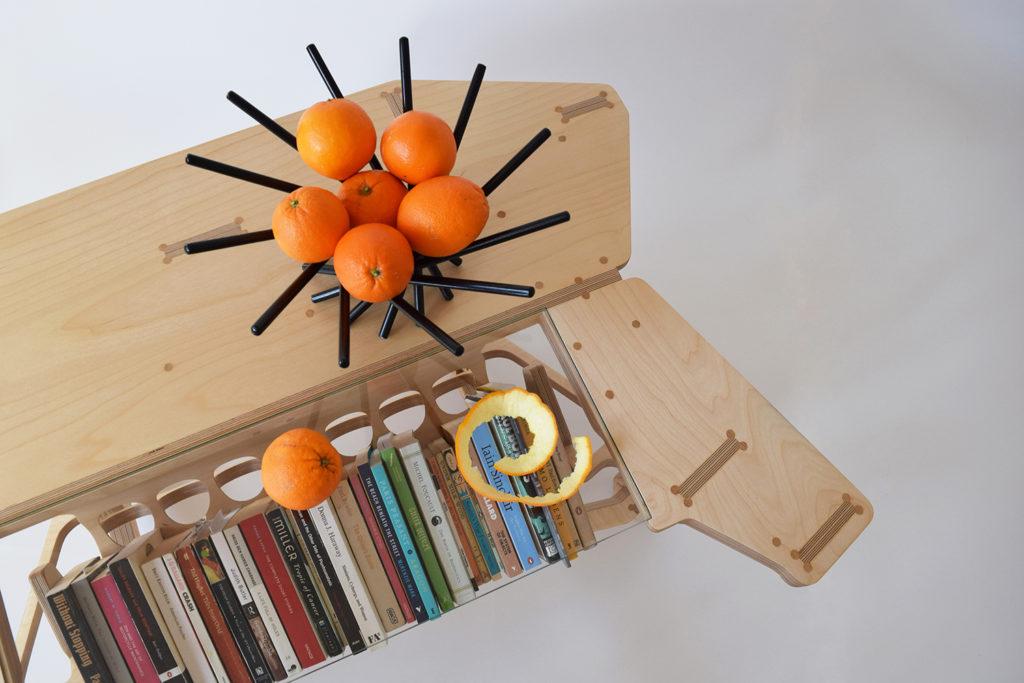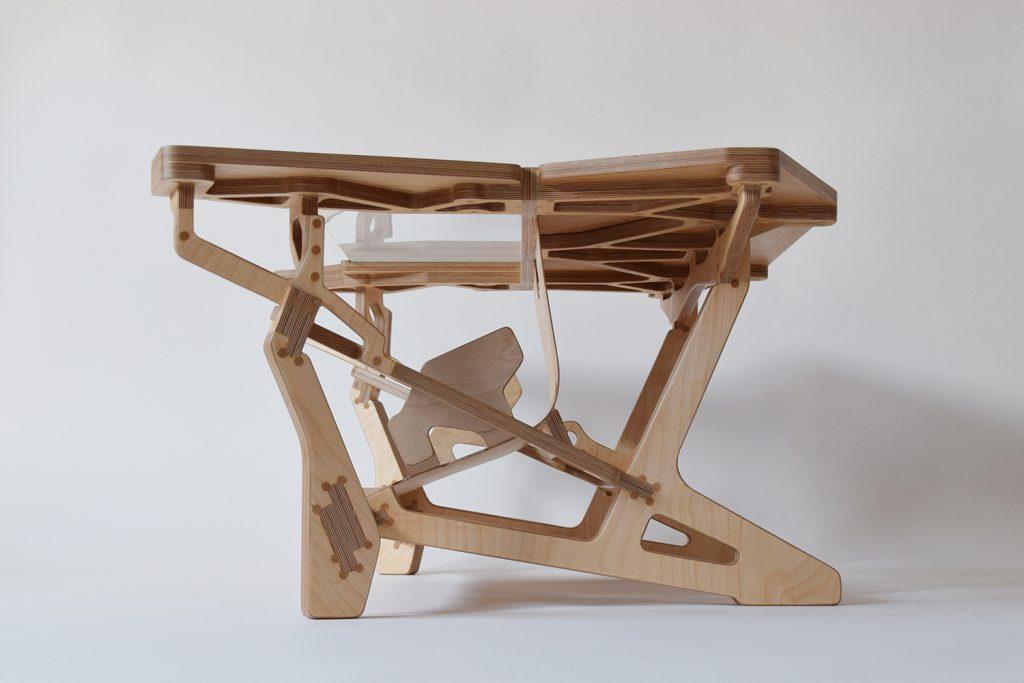
Peter West designed a magnificent and very detailed coffee table using Koskisen 18mm and 18-ply thin plywood. The consistent quality and strength of this material allowed him to construct a table with an eye-catching shape and elaborate features.
The coffee table began as an exploration of joinery techniques which combined CNC machining with manual woodworking. The design features a unique joint which allows for connections at oblique angles, something which would normally be impossible in furniture cut from sheet material by CNC machine.The complex form of the table evolved from thinking about how this technique could be expressed in a piece of furniture.
The design started with a digital 3D model, which provided patterns for the plywood sheet material. This was then cut with a 3-axis CNC machine, with additional shaping and drilling done by hand afterwards. As the table was being assembled the design continued to be refined. “I thought differently when working the plywood by hand compared to designing it in the computer and the detail of the design was adapted to reflect my response to the material”, explains Peter West, the designer of the coffee table.

The design of the table relied on the structural quality of the plywood, as well as benefiting from its aesthetics
The Koskisen 18mm/18-ply plywood used features very precise laminations which can be seen in all of the joints and edges of the coffee table. These patterns formed by the plywood are like the fingerprints of the table, and you can find them expressed in every detail. “The Koskisen 18mm/18-ply thin plywood also offers remarkable structural properties which allowed me to work the plywood into very slender components, and to shape it as I desired without concern for the stability of the material”, West describes his work. “These features would have been much more difficult to achieve with a lower grade plywood or mass timber material”.
The coffee table was inspired by the pleasure of looking at your book collection while you sit and have a coffee. An angled bookshelf was therefore incorporated underneath the tabletop, with a glass panel which allows you to read the spines of the books. The bookshelf itself is formed from 1.5mm plywood by a steam bending technique, with the holes allowing a tighter radius to be formed in the sheet. The thin sheet was flexible enough to achieve the curvature needed, but also strong enough to hold the weight of all the books.
See more Peter West’s works on his Instagram account @tangerineworks